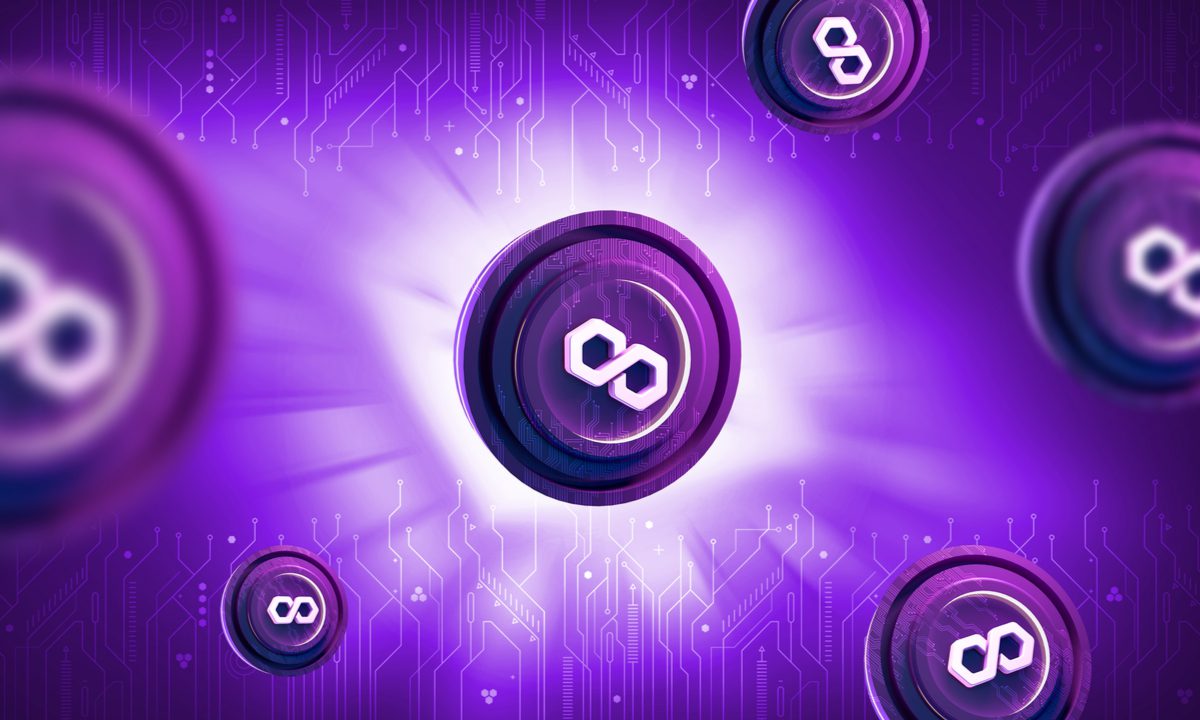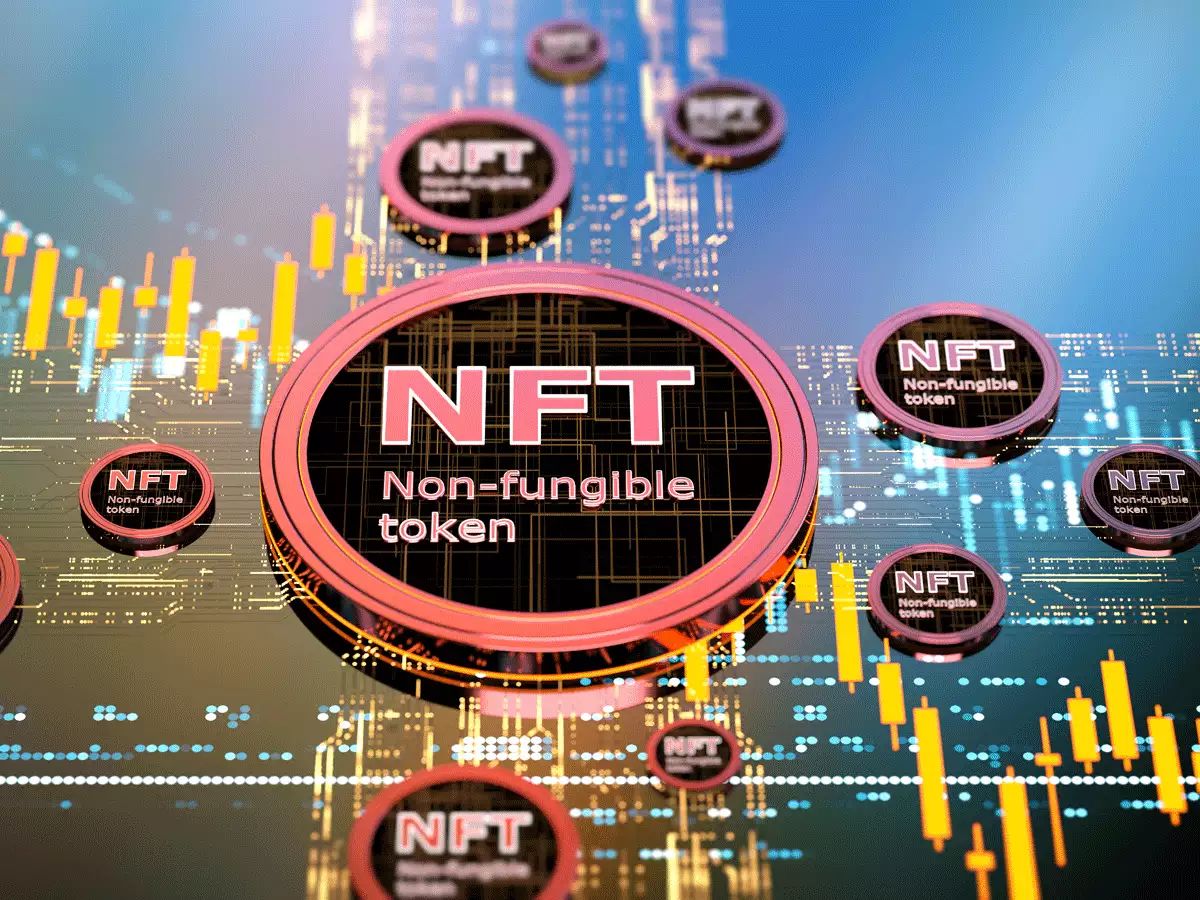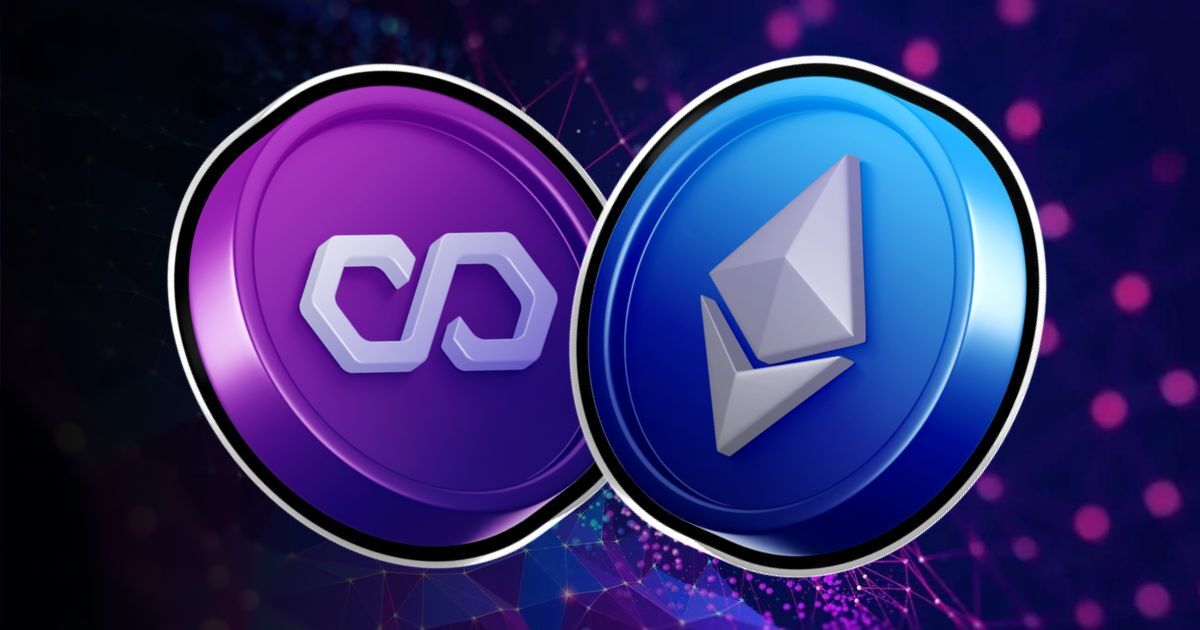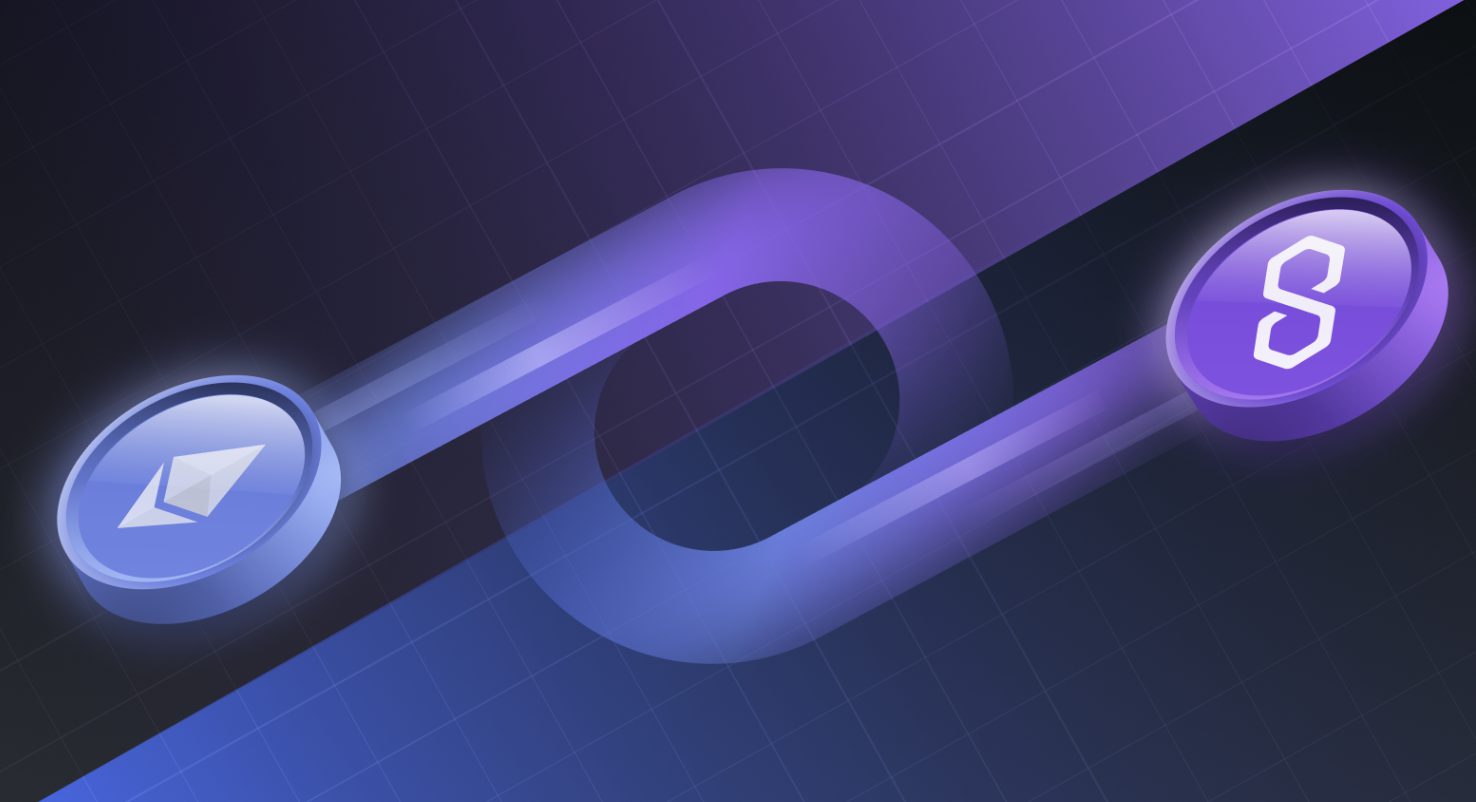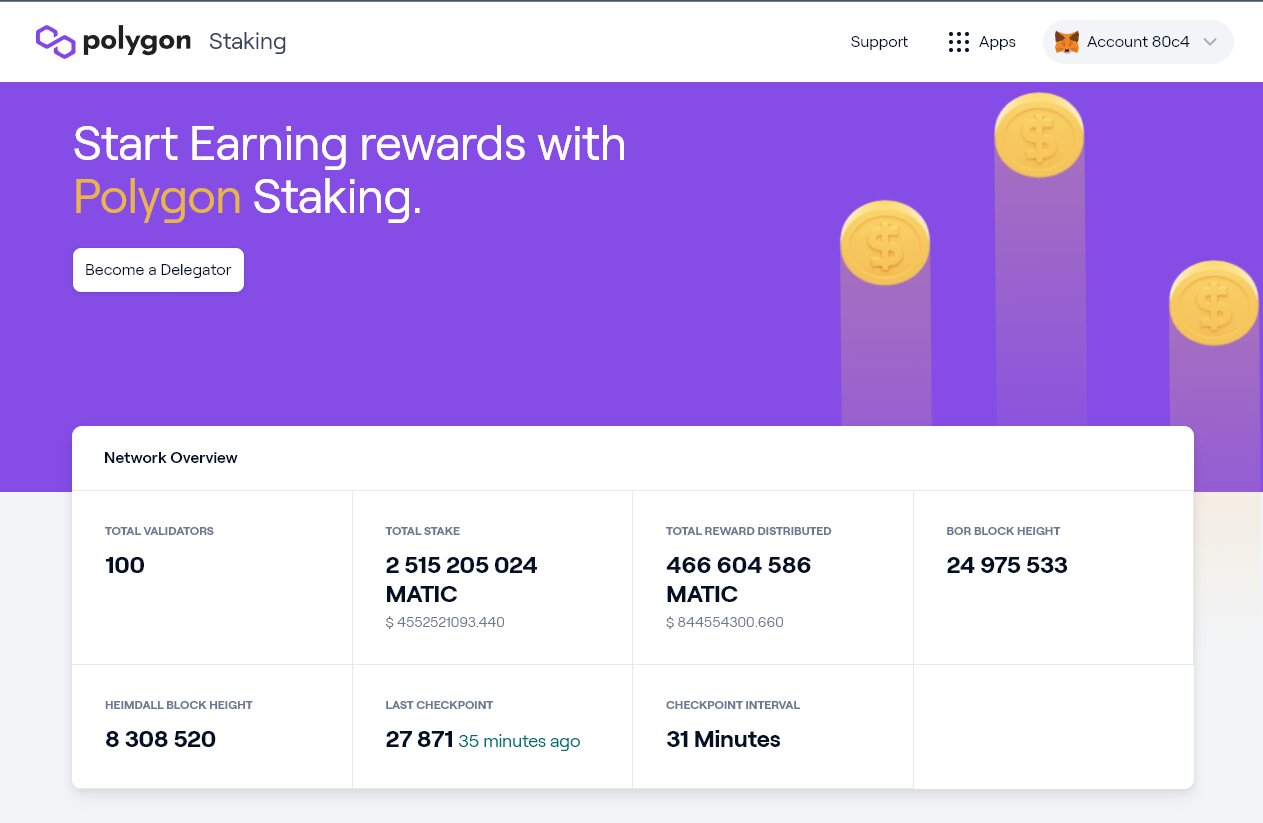Introduction
Blockchain technology has revolutionized various industries by offering decentralized, transparent, and secure solutions. One such blockchain that has gained considerable attention is Polygon. Formerly known as Matic Network, Polygon is a Layer 2 scaling solution that aims to address the scalability issues of the Ethereum network. It provides developers with an interoperable and scalable framework, allowing them to build and deploy decentralized applications (dApps) with ease.
With its innovative approach, Polygon aims to bridge the gap between traditional finance and decentralized finance (DeFi). By providing fast and low-cost transactions, Polygon opens up new possibilities for businesses and individuals seeking to leverage the benefits of blockchain technology.
In this article, we will take a closer look at Polygon and explore how it works, its key features, and the benefits of using the Polygon blockchain. We will also delve into some use cases and compare Polygon with other existing blockchains. Whether you’re a developer, investor, or simply curious about blockchain technology, this article will provide you with valuable insights into the world of Polygon.
Overview of Polygon
Polygon is an Ethereum-compatible scaling framework that aims to improve the scalability, security, and usability of the Ethereum network. It achieves this by utilizing a Layer 2 solution, which operates alongside the Ethereum mainnet, with the goal of reducing congestion and lowering transaction fees. Polygon provides a flexible and cost-effective solution for developers to build and deploy decentralized applications (dApps), making it an attractive ecosystem for blockchain enthusiasts.
Polygon operates as a multi-chain system, also referred to as a “Layer 2 aggregator.” It supports a wide range of Layer 2 solutions, including sidechains, rollups, and more. This flexibility allows developers to choose the most suitable scaling solution for their specific use case, empowering them to create robust and scalable dApps.
One of the notable features of Polygon is its compatibility with the Ethereum Virtual Machine (EVM), which enables seamless migration of existing Ethereum dApps to the Polygon network. This eliminates the need for developers to rewrite their code, making it easier and more efficient to port applications from Ethereum to Polygon.
With Polygon, developers benefit from increased transaction throughput and reduced fees. Polygon achieves high scalability by aggregating multiple transactions into a single transaction batch, which is then verified and settled on the Ethereum mainnet. This not only improves the efficiency of the network but also reduces gas fees, making the platform more accessible for users.
Moreover, Polygon places a strong emphasis on security and decentralization. It achieves this by utilizing the security of the Ethereum mainnet, with checkpoints being periodically anchored on Ethereum. This ensures that the Polygon network remains secure and resistant to attacks while leveraging the security of Ethereum.
In summary, Polygon is a Layer 2 scaling solution that provides a scalable and cost-effective framework for Ethereum developers. With its compatibility with the Ethereum Virtual Machine and support for various Layer 2 solutions, Polygon offers a compelling platform for developers to build and deploy their dApps. By addressing the scalability challenges of the Ethereum network, Polygon contributes significantly to the adoption and growth of decentralized applications on the blockchain.
How Does Polygon Work?
Polygon operates as a Layer 2 scaling solution for the Ethereum network. It works by leveraging various technologies and protocols to provide fast, low-cost, and scalable transactions. Let’s explore the key components and mechanisms that enable Polygon to achieve its goals.
At its core, Polygon consists of several components, including the Polygon PoS (Proof of Stake) chain, the Polygon PoS bridge, and the Polygon SDK (Software Development Kit).
The Polygon PoS chain operates as a Layer 2 sidechain that is secured by a network of validators. This chain utilizes a Proof of Stake consensus mechanism, where validators lock up Matic tokens as collateral and contribute to the security and validation of transactions. This helps in achieving faster block times and lower transaction fees compared to the Ethereum mainnet.
To facilitate interoperability between Ethereum and Polygon, the Polygon PoS bridge comes into play. The bridge allows users to seamlessly transfer and lock their assets on the Ethereum mainnet, which are then represented as corresponding assets on the Polygon network. This bridge ensures that assets can be easily moved back and forth between the two networks, providing users with flexibility and liquidity.
The Polygon SDK is a developer-friendly toolkit that provides a set of tools, libraries, and documentation to simplify the process of building and deploying applications on the Polygon network. It supports the Ethereum Virtual Machine (EVM), making it compatible with existing Ethereum dApps and enabling developers to leverage their existing knowledge and skills.
In terms of transaction processing, Polygon utilizes a technology called “commit chains” or “checkpointing.” This mechanism bundles multiple transactions into a single batch, which is then processed and verified as a single transaction on the Ethereum mainnet. By aggregating transactions, Polygon significantly improves transaction throughput and reduces gas fees, making it an ideal solution for high-volume applications.
Furthermore, Polygon is highly scalable due to its support for different Layer 2 scaling solutions, such as rollups. Rollups allow for compressing multiple transactions into a single transaction, reducing the overall computational load and increasing the scalability of the network.
Overall, Polygon works by combining a Layer 2 sidechain, a PoS consensus mechanism, a bridge for interoperability, and a developer-friendly SDK. These components work in tandem to provide a scalable, secure, and efficient environment for building and deploying decentralized applications on the Ethereum network. By addressing the scalability challenges of Ethereum, Polygon opens up new possibilities for developers and users, fostering the widespread adoption of blockchain technology.
Key Features of Polygon Blockchain
Polygon offers several key features that make it a compelling blockchain solution for developers and users alike. Let’s explore some of the notable features that set Polygon apart from other blockchains.
1. Scalability: Polygon addresses the scalability issues of the Ethereum network by providing a Layer 2 scaling solution. By aggregating transactions and utilizing various scaling technologies like rollups, Polygon significantly improves transaction throughput, allowing for faster and more efficient processing of transactions.
2. Interoperability: Polygon is built on the Ethereum network and offers seamless interoperability. It enables assets and data to be easily transferred between the Ethereum mainnet and the Polygon network, ensuring compatibility with existing Ethereum-based applications and opening up new possibilities for developers.
3. Low Transaction Fees: High gas fees have been a point of concern on the Ethereum network. Polygon tackles this challenge by reducing transaction costs. By bundling multiple transactions into a single batch and settling them on the Ethereum mainnet, Polygon minimizes the gas fees associated with each individual transaction.
4. Developer-Friendly Environment: Polygon provides a developer-friendly environment with the Polygon Software Development Kit (SDK). This toolkit includes various tools, libraries, and documentation that simplify the process of building and deploying applications on the Polygon network. The SDK’s compatibility with the Ethereum Virtual Machine (EVM) allows developers to easily port their existing Ethereum-based applications to Polygon, enhancing the developer ecosystem.
5. Security: Polygon leverages the security of the Ethereum mainnet through periodic checkpoints, ensuring the integrity and safety of the Polygon network. By anchoring checkpoints on Ethereum, Polygon achieves high security while benefiting from the robustness of the Ethereum network.
6. Community Support: Polygon has garnered significant community support, with a growing ecosystem of developers and users. The Polygon community actively contributes to the development and growth of the ecosystem through collaborations, partnerships, hackathons, and educational initiatives, fostering innovation and adoption.
7. Diverse Use Cases: Polygon supports a wide range of use cases beyond decentralized finance (DeFi). It serves as an ideal platform for building various applications, including non-fungible tokens (NFTs), gaming, decentralized exchanges (DEXs), and more. Its flexibility and scalability make it a versatile blockchain solution for different industries and applications.
In summary, Polygon offers a range of compelling features, including scalability, interoperability, low transaction fees, developer-friendly tools, security, community support, and diverse use cases. These features collectively contribute to its popularity among developers and users seeking efficient, cost-effective, and scalable blockchain solutions.
Benefits of Using Polygon
Using Polygon as a blockchain solution offers numerous benefits for both developers and users. Let’s explore some of the key advantages that make Polygon an attractive choice.
1. Scalability: The primary benefit of using Polygon is its scalability. With its layer 2 scaling solution, Polygon significantly improves the transaction throughput and capacity of the Ethereum network. This allows for a higher volume of transactions to be processed quickly and efficiently, solving one of the major challenges faced by blockchain applications.
2. Cost-Effectiveness: Polygon offers low transaction fees compared to the Ethereum network. By aggregating multiple transactions into a single batch and settling them on the Ethereum mainnet, Polygon reduces the gas fees associated with each transaction. This makes it more affordable for developers and users to interact with decentralized applications, which is particularly beneficial for smaller transactions.
3. Interoperability: Polygon’s interoperability with the Ethereum network allows for seamless asset transfers and easy integration of existing Ethereum-based applications. Developers can leverage their expertise in Ethereum and port their applications to Polygon with minimal effort. Users also benefit from the ability to transfer assets between Ethereum and Polygon, providing increased flexibility and liquidity.
4. Developer-Friendly Environment: Polygon provides a developer-friendly environment through its Polygon Software Development Kit (SDK). This toolkit includes various tools, libraries, and documentation that streamline the development process, making it easier for developers to build and deploy applications on the Polygon network. The compatibility with the Ethereum Virtual Machine (EVM) allows developers to reuse their existing code, reducing the learning curve and enabling faster adoption.
5. Enhanced User Experience: Polygon improves the user experience by offering faster transaction confirmations and reduced waiting times. Users can seamlessly interact with decentralized applications without experiencing the delays and congestion often associated with the Ethereum network. This enhanced user experience encourages adoption and engagement with blockchain applications.
6. Security: Polygon ensures a high level of security by anchoring periodic checkpoints on the Ethereum mainnet. This allows Polygon to benefit from the security infrastructure of Ethereum, providing users with confidence in the integrity and safety of the network. The security measures implemented by Polygon make it a reliable choice for developers and users seeking a secure blockchain solution.
7. Wide Range of Use Cases: Polygon supports various use cases beyond decentralized finance (DeFi), including non-fungible tokens (NFTs), gaming, decentralized exchanges (DEXs), and more. This versatility makes it an attractive platform for developers to explore and build innovative applications across different industries.
In summary, using Polygon as a blockchain solution offers scalability, cost-effectiveness, interoperability, a developer-friendly environment, an enhanced user experience, security, and a wide range of use cases. These benefits make Polygon an appealing option for developers and users looking to leverage the advantages of blockchain technology without the scalability and cost limitations of the Ethereum network.
Use Cases of Polygon
Polygon is a versatile blockchain solution that supports a wide range of use cases beyond decentralized finance (DeFi). Let’s explore some of the key use cases where Polygon is being implemented and making a significant impact.
1. Decentralized Finance (DeFi): Polygon has emerged as a popular platform for DeFi applications due to its scalability and low transaction fees. It enables developers to build decentralized exchanges (DEXs), lending and borrowing platforms, yield farming protocols, and more. Notable DeFi projects on Polygon include Aave, SushiSwap, and Curve Finance.
2. Non-Fungible Tokens (NFTs): NFTs have gained immense popularity, and Polygon has become a favored platform for NFT projects. Polygon’s low fees and fast transaction confirmations make it an ideal choice for minting, buying, and selling NFTs. Several NFT marketplaces and gaming platforms, such as OpenSea and Decentraland, have leveraged Polygon for their NFT infrastructure.
3. Gaming: Polygon is increasingly being utilized in the gaming industry. Its scalability and low transaction fees provide an improved gaming experience, enabling seamless in-game transactions and asset ownership. Projects like Axie Infinity and SkyWeaver have integrated with Polygon to offer players faster and cost-effective gameplay.
4. Layer 2 Infrastructure: Polygon serves as a robust layer 2 infrastructure for Ethereum and provides scalability solutions for various applications. Developers can leverage Polygon’s sidechains and rollups to enhance the performance and efficiency of their applications while maintaining interoperability with the Ethereum network.
5. Supply Chain Management: Polygon can facilitate transparent and secure supply chain management systems. Blockchain technology enables the tracking and verification of goods and transactions, ensuring authenticity and reducing fraud. Companies can utilize Polygon’s scalability and security features to implement efficient supply chain solutions.
6. Governance and Voting: The immutability and transparency of blockchain make it suitable for governance and voting mechanisms. Polygon can be utilized to create decentralized governance platforms, allowing token holders to have a say in important decisions and ensuring transparent and fair voting processes.
7. Social Networks and Content Sharing: Blockchain-based social networks and content sharing platforms can benefit from Polygon’s scalability and low transaction fees. By utilizing Polygon, these platforms can enable users to monetize their content, reward creators, and ensure transparency and copyright protection.
These are just a few examples of the many use cases for Polygon. Its versatility and scalability open up endless possibilities for developers and businesses across industries to leverage the benefits of blockchain technology in their operations.
Comparison with other Blockchains
When evaluating blockchain solutions, it’s crucial to consider their unique features, scalability, security, and ecosystem. Let’s compare Polygon with other popular blockchains to better understand its advantages and positioning in the market.
1. Ethereum: As an Ethereum Layer 2 solution, Polygon offers several advantages over the Ethereum network itself. It addresses the scalability issues faced by Ethereum, providing faster transactions and lower fees. Polygon’s compatibility with Ethereum’s ecosystem allows developers to easily port their applications to the Polygon network without significant code changes.
2. Binance Smart Chain (BSC): Binance Smart Chain is another blockchain known for its low fees and high transaction throughput. While BSC offers fast and inexpensive transactions, it is more centralized compared to Polygon. Polygon, on the other hand, ensures decentralization by using a Proof of Stake consensus mechanism and anchoring checkpoints on the Ethereum mainnet.
3. Solana: Solana is a high-performance blockchain known for its scalability and low transaction fees. It offers fast transaction confirmations and supports a wide range of applications. However, Solana operates as a separate blockchain, while Polygon operates as a Layer 2 scaling solution on top of Ethereum, making it easier for developers to leverage their existing Ethereum applications.
4. Cardano: Cardano is a blockchain that prioritizes scalability, security, and sustainability. It utilizes a unique proof-of-stake consensus mechanism and aims to provide a strong foundation for building decentralized applications. While Cardano focuses on its own ecosystem, Polygon offers interoperability with Ethereum, allowing for seamless asset transfers and compatibility with the existing Ethereum-based applications.
5. Avalanche: Avalanche is another blockchain that aims to provide scalability and high throughput. It utilizes a consensus mechanism called Avalanche, enabling faster transaction confirmations and reduced fees. Avalanche operates as a separate blockchain, while Polygon operates as a Layer 2 scaling solution on top of Ethereum. This makes Polygon more accessible for developers with existing Ethereum applications.
While each blockchain has its strengths and weaknesses, Polygon distinguishes itself by offering scalability, low transaction fees, interoperability with Ethereum, and a developer-friendly environment. The compatibility with the Ethereum ecosystem makes it a preferred choice for developers seeking to leverage their existing Ethereum applications on a more scalable network.
Moreover, Polygon’s focus on security, decentralization, and its active community support contribute to its growing popularity and adoption. By providing a flexible and cost-effective solution, Polygon has emerged as a significant player in the blockchain industry, offering developers and users an efficient and scalable blockchain platform.
How to Get Started with Polygon
Getting started with Polygon is relatively straightforward, whether you are a developer or a user interested in utilizing the capabilities of the Polygon blockchain. Here are the key steps to begin your journey with Polygon:
1. Wallet Setup: The first step is to set up a cryptocurrency wallet that supports Polygon. There are several popular options, such as MetaMask and Trust Wallet, that provide compatibility with Polygon. Create a new wallet or import your existing wallet into the chosen wallet application.
2. Network Configuration: After setting up your wallet, you need to configure the network settings to connect to the Polygon network. In the wallet application, search for the network settings or the network selection option. Click on “Add Network” and input the following details for the Polygon mainnet:
- Network Name: Polygon Mainnet
- New RPC URL: https://rpc-mainnet.matic.network
- Chain ID: 137
- Currency Symbol: MATIC
- Block Explorer URL: https://explorer.matic.network
Save the network configuration, and you should now be connected to the Polygon mainnet.
3. Transferring Assets: If you already have assets on the Ethereum network, you can transfer them to Polygon to utilize the Polygon ecosystem. In your wallet application, navigate to the “Send” or “Transfer” option and select the asset you want to transfer. Choose the Polygon network as the destination network and proceed with the transfer. The assets will be locked on Ethereum and represented on Polygon.
4. Exploring dApps: Polygon has a growing ecosystem of decentralized applications (dApps) that you can explore and interact with. Visit popular dApp directories like DappRadar or visit the Polygon official website to discover the available dApps. Connect your wallet to the desired dApp and start exploring the features and functionalities.
5. Development on Polygon: If you are a developer interested in building on Polygon, the Polygon Software Development Kit (SDK) provides a comprehensive set of tools and documentation. You can access the Polygon SDK, which includes libraries, APIs, and sample code, to develop and deploy your own applications on the Polygon network. Take advantage of the compatibility with the Ethereum Virtual Machine (EVM) to adapt your existing Ethereum applications for Polygon.
6. Join the Community: Engaging with the Polygon community is an excellent way to get support, share knowledge, and stay updated with the latest developments. Join official Polygon social media channels, such as Discord, Telegram, and Twitter, to connect with other community members, developers, and the Polygon team itself.
By following these steps, you can easily get started with Polygon and explore its features, transfer assets, and interact with the growing ecosystem of dApps. Whether you’re a user or a developer, Polygon provides a seamless and scalable blockchain solution that opens up new possibilities in decentralized finance, gaming, NFTs, and more.
Conclusion
Polygon has emerged as a leading Layer 2 scaling solution for the Ethereum network, addressing the scalability challenges faced by blockchain applications. With its innovative approach, Polygon offers developers a scalable, cost-effective, and interoperable framework to build and deploy decentralized applications (dApps).
Throughout this article, we have explored the key features and benefits of using Polygon. Its scalability, low transaction fees, and compatibility with Ethereum make it an attractive choice for developers seeking to leverage the benefits of blockchain technology without the limitations of the Ethereum network.
Polygon’s flexible architecture, developer-friendly environment, and support for a wide range of use cases have contributed to its growing popularity among developers and users. Its compatibility with the Ethereum ecosystem allows for the seamless transfer of assets and the easy integration of existing Ethereum-based applications.
Whether you are a developer looking to build on Polygon or a user interested in utilizing its capabilities, the steps outlined in this article provide a clear guide to getting started with Polygon. By setting up a compatible wallet, configuring the network settings, transferring assets, and exploring the growing ecosystem of dApps, you can experience the benefits of Polygon firsthand.
It is worth noting that Polygon is an evolving blockchain technology, and as such, it is essential to stay updated with the latest developments and engage with the active Polygon community. Joining official Polygon social media channels and participating in developer communities can provide valuable support and insights as you navigate the Polygon ecosystem.
In conclusion, Polygon offers a scalable, secure, and cost-effective blockchain solution that addresses the scalability limitations of the Ethereum network. With its interoperability, versatile use cases, and developer-friendly environment, Polygon is poised to play a significant role in the future of decentralized applications and the adoption of blockchain technology.







